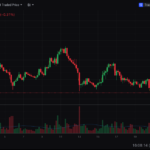Technical analysis is a cornerstone of trading strategies, providing traders with the tools to analyze price movements and make informed decisions. Whether you’re trading stocks, cryptocurrencies, or commodities, understanding technical analysis can significantly enhance your ability to predict market behavior and capitalize on opportunities.
What is Technical Analysis?
Technical analysis involves studying past market data, primarily price and volume, to forecast future price movements. Unlike fundamental analysis, which evaluates the intrinsic value of an asset, technical analysis focuses solely on historical data and patterns.
Key elements of technical analysis include:
- Price Charts: The visual representation of price movements over time.
- Indicators: Tools like Moving Averages (MA), Relative Strength Index (RSI), and Bollinger Bands help identify trends and reversals.
- Patterns: Chart patterns such as Head and Shoulders, Double Bottoms, and Triangles signal potential price directions.
- Support and Resistance Levels: Key price levels where buying or selling pressure might emerge.
Core Principles of Technical Analysis
- Market Discounts Everything: Price reflects all available information, including fundamentals, news, and investor sentiment.
- Prices Move in Trends: Assets often follow trends, making it essential to identify and trade along these directions.
- History Repeats Itself: Patterns observed in the past are likely to reoccur due to consistent market psychology.
Key Tools and Techniques
1. Candlestick Charts
- Candlesticks provide insights into market sentiment over a given time frame.
- Patterns such as Doji, Hammer, and Engulfing can indicate potential reversals or continuations.
2. Moving Averages
- Simple Moving Average (SMA) and Exponential Moving Average (EMA) smooth out price data to identify trends.
- Crossovers (e.g., 50-day MA crossing 200-day MA) often signal buying or selling opportunities.
3. Relative Strength Index (RSI)
- RSI measures the speed and change of price movements, indicating overbought or oversold conditions.
4. Fibonacci Retracement
- This tool helps identify potential reversal levels by measuring key ratios from a significant price move.
5. Trendlines and Channels
- Trendlines highlight the direction of a trend, while channels indicate ranges of price movement.
Developing a Technical Analysis Trading Strategy
1. Define Your Goals
- Are you a day trader looking for quick gains, or a swing trader aiming to capitalize on broader trends?
2. Choose Your Indicators
- Select 2-3 complementary indicators to avoid overcomplicating your analysis.
3. Set Entry and Exit Rules
- Define conditions for entering and exiting trades. For example:
- Entry: RSI below 30 and price touching a support level.
- Exit: Price hits the next resistance level.
4. Risk Management
- Always use stop-loss orders to limit potential losses.
- Aim for a risk-to-reward ratio of at least 1:2.
5. Backtest Your Strategy
- Test your approach on historical data to evaluate its effectiveness.
Benefits of Technical Analysis
- Simplicity: Focuses solely on price action without needing in-depth knowledge of an asset’s fundamentals.
- Versatility: Applicable to any market, from stocks to cryptocurrencies.
- Timeliness: Provides actionable signals for both short-term and long-term trading.
Common Pitfalls to Avoid
- Overloading Indicators: Too many indicators can lead to conflicting signals and analysis paralysis.
- Ignoring Risk Management: Even the best analysis won’t guarantee success without proper risk controls.
- Trading Against the Trend: Respect the market’s momentum and avoid contrarian trades without strong evidence.
Conclusion
Technical analysis is a powerful tool for traders of all levels. By mastering chart patterns, indicators, and trends, you can enhance your trading skills and increase your chances of success. However, remember that no strategy is foolproof, and disciplined risk management is essential to long-term profitability.
Disclaimer: This article is for educational purposes only and should not be considered financial advice. Always conduct thorough research before making trading decisions.







